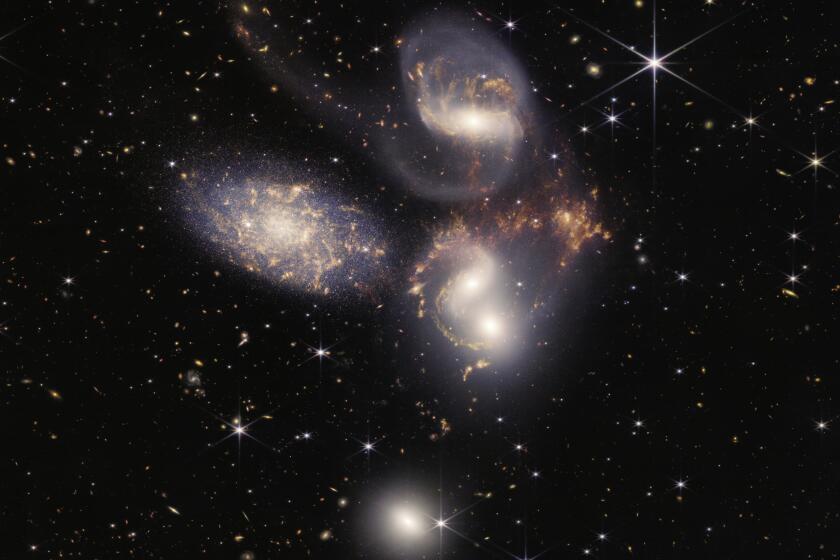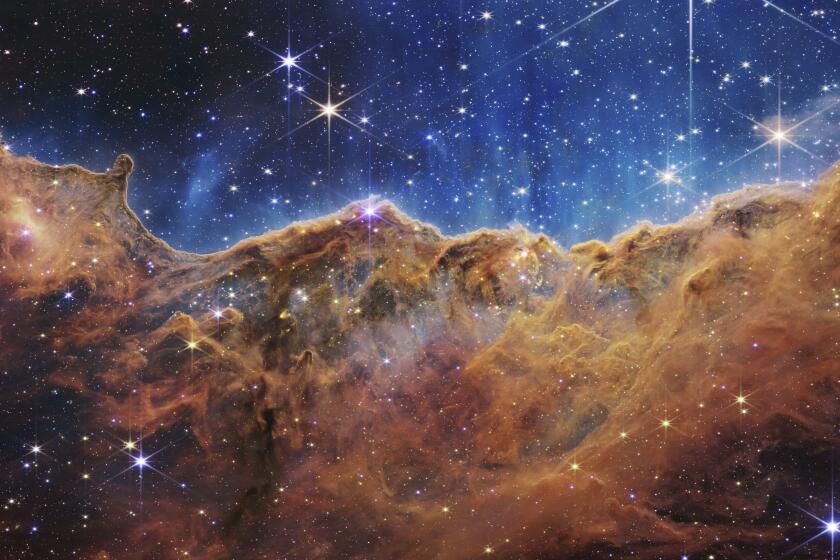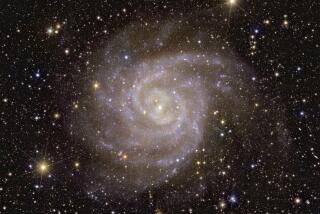We’re in a crowded universe, but Earth is still precious

- Share via
On a recent camping trip to Kings Canyon National Park I had the opportunity to escape the light-polluted vistas of the city and look through a pair of binoculars at the stars under a dark Sierra Nevada sky.
Above the forest and mountains I saw constellations and stars that are too faint to make out in Los Angeles, in details and colors that I can’t usually distinguish. It has been a long time since I’d had such a clear view of the night sky.
This week, we all had a chance to see the universe more clearly with the release of the beautiful and dazzling first images of the distant and early universe from the James Webb Space Telescope. The first (above), known as Webb’s First Deep Field, is a sharp and detailed image of a cluster of distant galaxies (foreground) as they appeared 4.6 billion years ago. What puts it in perspective is that all that glittering detail is contained in an area of the sky as small as a grain of sand held at arm’s length. Outer space suddenly seems more crowded.
NASA released the first complete set of images from the James Webb Space Telescope, including stars in their infancy and their final gasps.
Other images and data from the infrared telescope released in recent days include the Carina Nebula, where young stars are born, and the Southern Ring Nebula, a cloud of cosmic dust and gas expelled by a dying star about 2,000 light-years away. Webb also discovered evidence of water in the atmosphere of a hot gas giant planet, named WASP-96 b, that orbits a distant sun-like star.
I was most interested to learn how useful the telescope will be for studying exoplanets — which orbit stars outside of our solar system — and help us understand how unique or common Earth-like planets really are.
“Webb is the first observatory that will allow us to explore worlds as small as ours,” astronomer Néstor Espinoza with the Space Telescope Science Institute said during a NASA webcast Wednesday.
The world gets its first glimpse of ancient light courtesy of NASA’s Webb telescope, the most sophisticated and ambitious deep-space viewing tool yet assembled.
But the Deep Field image, in particular, seems poised to join a short list of images from astronomy and space exploration that are so significant they have helped redefine our understanding of the universe and Earth’s place in it. They include the 1968 Earthrise photo from the Apollo 8 mission, which shows our planet as seen from lunar orbit, and the 1990 “Pale Blue Dot” photo taken by the Voyager 1 space probe, in which Earth appears as a mere speck in a vast expanse of outer space.
For some, the takeaway from these new glimpses into deep space might be that Earth is small and inconsequential. That the more clearly we see the universe, in its rich vastness, the more our planet seems like an infinitesimal drop in a cosmic ocean.
But for me, our growing understanding of the universe only reinforces the fact that Earth is our only home. It’s still the only planet we know of that sustains life. It’s protected by a thin and fragile atmosphere. It’s in danger from climate change and other human-caused threats. It’s still singular, precious and worth fighting for.
More to Read
A cure for the common opinion
Get thought-provoking perspectives with our weekly newsletter.
You may occasionally receive promotional content from the Los Angeles Times.












